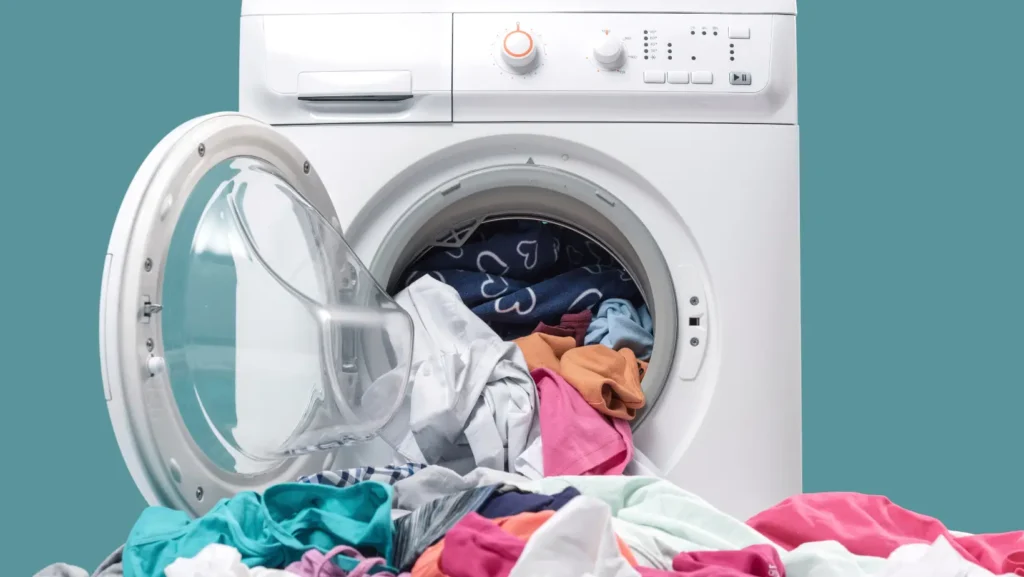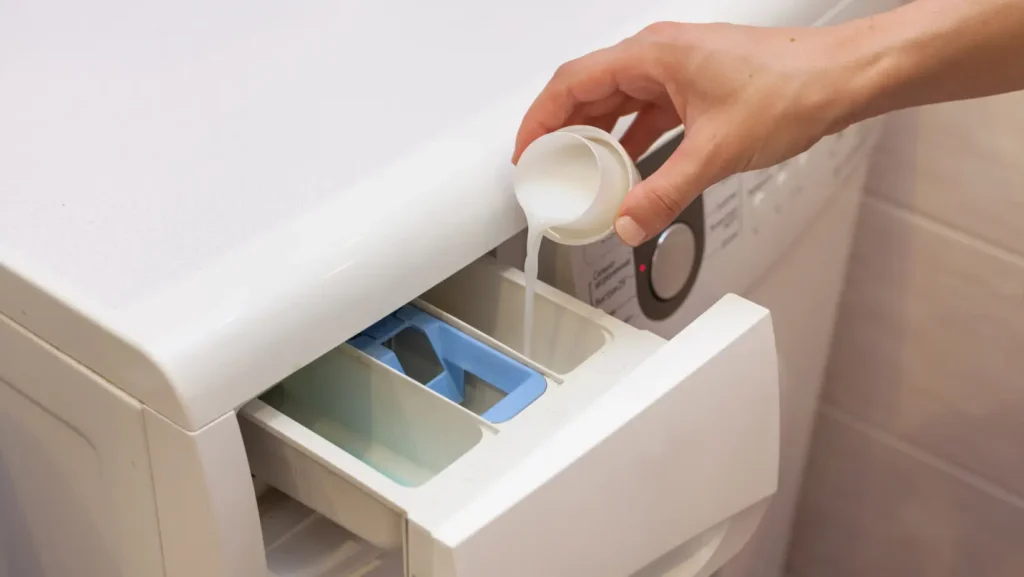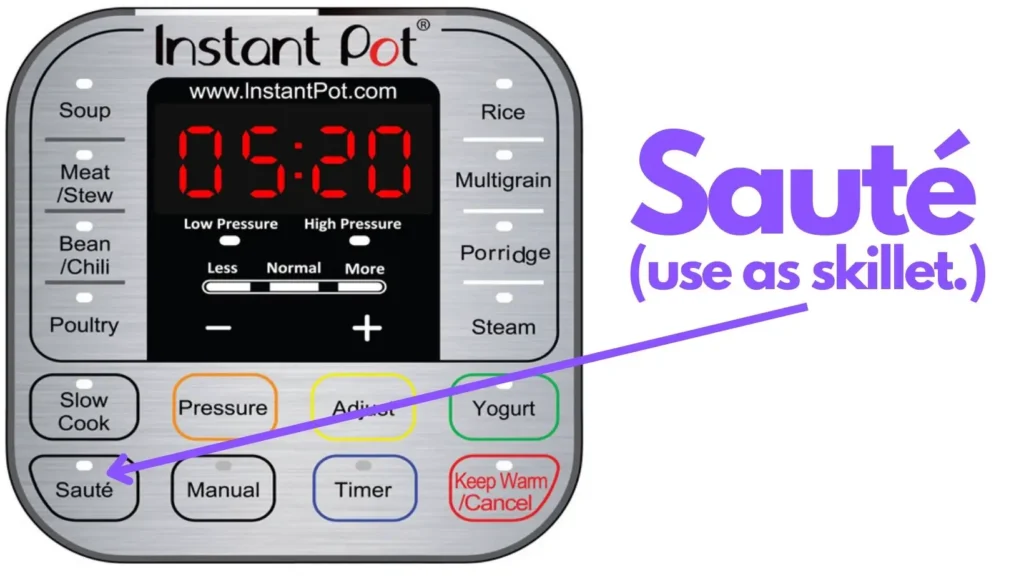
Nowadays, life is all about efficiency and getting things done as quickly as possible. So, it’s no wonder that people are always looking for shortcuts, especially when it comes to laundry.
One question that we often get asked here at the laundry mat is whether or not you can put fabric softener straight into the washing machine instead of using a pre-soaked washcloth. The answer is yes, but there are some important considerations to keep in mind before doing so.
Summary – You can mix fabric softener with water and put it directly in washers without a dispenser. Just make sure to use it in the rinse cycle.
How is Fabric Softener Used?
Different washing machines use fabric softeners in different ways. Some have a built-in dispenser that releases the softener automatically, while others don’t have one. If your machine doesn’t have a dispenser, you’ll need to add the fabric softener into the washing machine manually.
Let’s take a look at the different kinds of machines and how fabric softener is used with them.
Using A Front-loader Washing Machine.
- Measure the recommended amount of fabric softener using the cap of your container.
- Then, Pour the Fabric Softener into the washer’s automatic Softener Dispenser Tray.
- Let the washer release the fabric softener in the rinse cycle
- Transfer clothes to the dryer.
Top-loader Washing Machine

The top-loading washer is similar to the front-loading washer, with the main difference being the location of the detergent dispenser. The dispenser is typically located in the center column on a top-loading washer.
How do you use a fabric softener with the top-loader washing machine? Easy!
- Measure the right amount of softener to be used with the container’s cap.
- Pour softener into the dispenser, mostly at the central column
- The washer releases the softener during the spin cycle.
Automatic Dispenser Washing Machine
- Instead of using the cap cover to measure the correct amount of fabric softener, use the fill lines on the side of the dispenser to measure the right amount of liquid.
- Then, pour it into the dispenser at the same time you add detergent.
- During the rinse cycle, as the water level fills the machine, the fabric softener is distributed evenly throughout the water to soften and protect your fabrics.
No Dispenser
You can still use fabric softener if your washing machine doesn’t have a fabric softener dispenser. Just be sure to use it correctly by following the steps below.
- Start a wash cycle on your machine and let it wash till it’s time to rinse
- Dilute the softener with water in a bottle to prevent the possibility of stains on the clothes.
- Shake well, then pour it into the drum as water fills it in for the rinse cycle.
- After washing, air dry clothes or put them in a dryer.
By following these steps, depending on your machine type, you have successfully added fabric softener straight into the washing machine and enhanced the smell and feel of your clothes.

Tips on Sorting your Clothes Before Using a Fabric Softener.
While adding Fabric softener to your laundry process is great, you should sort your clothes first before using fabric softener. Some clothing materials have a low tolerance for Fabric softeners and may hurt them. Some of these fabric types include:
Microfiber: Microfiber is an extremely thin synthetic fiber that is mostly used to absorb water. By using fabric softeners on your microfiber fabric, certain chemicals in it damage the absorption of the clothing.
Wool: The fabric softener may destroy clothing with wool fabric as the chemical causes the lint to lose.
Flame Resistance Clothing: Fabric softener decreases the flame resistance of the fabric and compromises its entire use.
Water-repellent Clothing: Fabric softener reduces the repulsion performance of the clothing.
Towels: They are designed to soak in moisture and air dry quickly. Fabric softeners trap moisture in fibers and prevent them from drying, making them wet and smelly. =
Quick Tip: Don’t use fabric softener on baby clothing to prevent irritation that the chemical may cause.
If a chemical-based fabric softener is too harsh for your clothes or skin, you can opt for homemade softener with white vinegar, which removes strong odor and stain and is less likely to cause irritation or allergies.

Do you Have to Use Fabric Softener on your Clothes, and Why Should you Use Fabric Softener at all?
Adding fabric Softener to your clothes is not mandatory, and it doesn’t determine or contribute to the cleanliness of your clothes. But, fabric softener has many benefits to your clothes’ overall sensation and quality. These benefits are:
- Prevents wear and tear.
- Protects clothes from fading.
- Prevents static build-up by lubricating the fibers of your clothes.
- Reduces wrinkles and retains the shape of your clothes
- Provides softness, a pleasant fragrance, and freshness to your clothes.
- Makes your clothes dry fast and easy to iron.
FAQs Can You Put Fabric Softener Straight Into The Washing Machine
Should You Put Fabric Softener in your Wash Cycle?
Adding fabric softener simultaneously with detergent for washing weakens the effect of the chemical that makes your clothing soft. Fabric Softeners contain cationic surfactants incompatible with anionic surfactants in detergents.
Are you Supposed to Dilute Fabric Softener?
Fabric softeners should be diluted when using a washing machine without an automatic dispenser.
How Much Fabric Softener Should I Use?
You should use 1 – 2 tablespoons of Fabric Softener per load. However, you should follow the instructions on the fabric softener container to be on the safe side.

